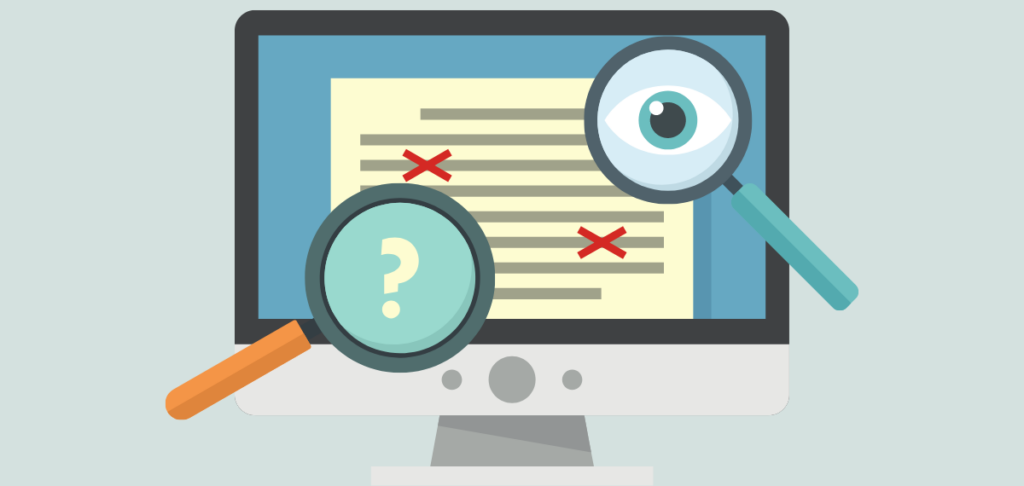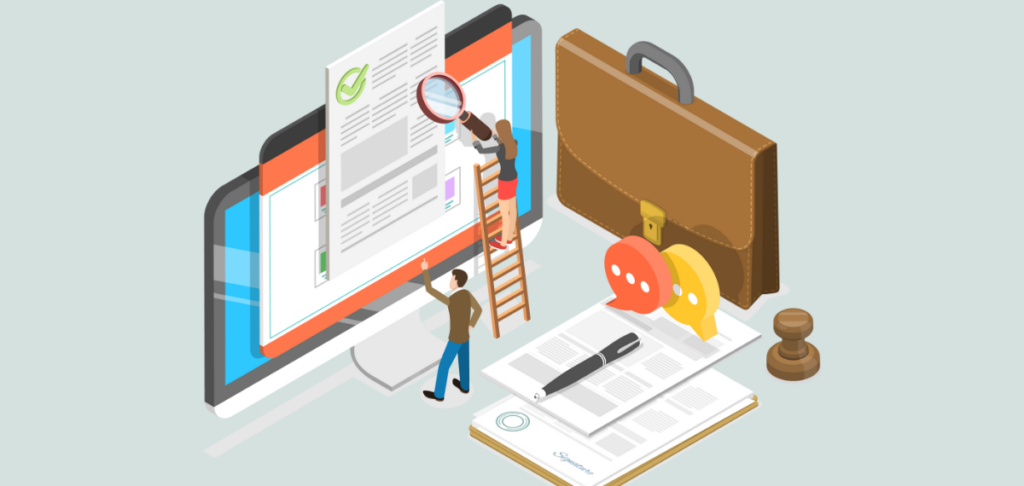Proofreading is the final, critical pass-through that polishes written content to near perfection. It’s an important step in any field of writing, from simple blog posts to full-length novels. Now, proofreading is part of editing, but it cannot replace it.
Editing delves deep into improving the structure, clarity, and style of the writing, but proofreading zeroes in on any surface errors that were missed, things that a second set of eyes can easily catch. We’re talking grammar slips, common spelling mistakes, incorrect punctuation, and skewed formatting—the small details that make a massive impact.
In my guide below, I’ll take the time to break down why proofreading is non-negotiable, the steps to proofread content effectively, the types of content that need it, essential skills and tools for the job, and how professional proofreading services can elevate your work.
Ready to transform your drafts from rough to refined? Stick with me to the end!

Why Is Proofreading Important?
Imagine presenting a masterpiece painting to rival something that Picasso would paint but with smudges on the edges. That’s what skipping proofreading can do to your writing.
Proofreading isn’t just about catching typos; it’s about ensuring clarity, coherence, and even professionalism. Neglect this important step, and you risk your work being undermined by easily avoidable errors, casting a shadow on your credibility and the text’s impact.
In a nutshell, proofreading safeguards your reputation and ensures your message is received loudly and clearly. I knew an author from one of my circles who wrote a stellar romance novel. I had the pleasure of beta-reading it and knew it would be a huge hit. The writing was that good.
But the author made one big mistake. She didn’t get it proofread after all the major editing and formatting, and little did she know there was a formatting error. So, when thousands of readers downloaded it to their Kindle on release day, it was practically unreadable on their e-readers.
Such a simple mistake and, honestly, an easy fix completely kiboshed the launch of what could have been the next big romance novel. It kills me to think about it even to this day.
Take your grammar skills to the next level
Take Our Copyediting Course
What Are the Steps in Proofreading?
All editors and proofreaders have their own ways of doing things. But, for the most part, these are the most common and basic steps to follow when proofreading a piece of work.
First Step: Initial Read-Through
Start by reading the text in its entirety to get a sense of the flow and identify glaring issues to make note of for the second read-through. This can be daunting for things like a hundred-thousand-word fantasy novel, though. In cases such as this, try breaking the content into sections: first half, first ten chapters, etc.
Second Step: Focus on Details
Next, scrutinize the work for common errors—spelling, grammar, punctuation, and formatting inconsistencies. Personally, I like to do this step in sub-steps. First, scan and correct glaring spelling errors. Then, go back to the beginning and check for proper punctuation, and so on.
Dividing this step into smaller tasks like this helps me stay focused so that I don’t miss anything. It’s so easy to get caught up on punctuation when you’re supposed to be looking for typos and formatting errors, too.
Third Step: Check Consistency
Take the time and ensure consistency in terminology, voice, and stylistic choices throughout the document. For example, if a story is written in first person POV, but the author slipped into the third person a couple of times, a proofreader would catch that.
I found this step very important when dealing with clients who used ghostwriters. Their ghost would write the bulk of the work, but the client would then change things or add to it. This mixes the voices and often confuses the reader.
Fourth Step: Read Aloud
I love this step! Not all proofreaders do this, but I know first-hand how hearing the words can help catch errors your eyes might skip. Microsoft Word has a built-in read-aloud feature where an AI voice will read the text to you so that you can hear it.
If you prefer the sound of your voice, nothing stops you from sitting down and speaking out loud as you read. Trust me, this step will help you catch things you glossed over a hundred times.
Fifth Step: Final Check
Use tools and checklists to go over your text with a fine-tooth comb. I’ve said it before, and I’ll say it hundreds of times more: Grammarly is your best friend when it comes to writing, editing, and/or proofreading. ProWritingAid is another great tool that can help you streamline things.
These programs are like having your own little assistant or intern. After you’ve done all you can, run the text through Grammarly (or the editing program of your choice) and see what it catches. You’ll be amazed.
Having a checklist handy also helps lower the headache of remembering every detail you should be hunting for in the document.
Don’t have a checklist? No worries! Here’s one you can save and use at any time:
Final Proofreading Checklist
Spelling
- Check for common misspellings and typos.
- Verify proper names, places, and technical terms are spelled correctly.
Grammar
- Ensure subject-verb agreement.
- Correct improper tense usage.
- Fix misplaced modifiers and dangling participles.
Punctuation
- Verify that commas, periods, semicolons, and colons are used correctly.
- Check for proper use of apostrophes (it’s vs. its, for example).
- Ensure that quotation marks and parentheses are correctly paired.
Formatting
- Confirm consistent font size and style throughout the document.
- Check headings and subheadings for uniformity.
- Verify that paragraph alignment and spacing are consistent.
- Ensure that lists (bulleted or numbered) are formatted uniformly.
Consistency
- Maintain consistency in terminology and key phrases.
- Ensure consistent use of voice (first person, third person, etc.).
- Verify consistent stylistic choices, such as capitalization and hyphenation.
Readability
- Check for overly long sentences and consider breaking them up for clarity.
- Ensure that paragraphs flow logically from one to the next.
- Verify that technical terms and jargon are explained or appropriate for the audience.
- Ensure all citations are present and correctly formatted according to the relevant style guide (APA, MLA, CMOS, etc.).
- Verify that the reference list or bibliography matches the in-text citations.
Final Touches
- Check for any repeated information or redundancy that can be eliminated.
- Ensure the conclusion effectively summarizes the main points and offers a clear ending.
- Perform a last read-through for any errors missed in previous checks.
Bonus Tip: Take it from me. Allowing yourself to have breaks between writing and proofreading can refresh your perspective so that you can return to the project ready to go.
What Types of Content Require Proofreading?
Every written piece deserves a proofreading session, from serious academic essays to zesty blog posts.

- Academic papers
- Books
- Fiction novels
- Social media content
- Scripts
- Business reports
- Emails
- Web content
- Advertising copy
- Legal content
These all benefit from the meticulous review of a proofreader. It’s not just about correctness; it’s about refining your message for the targeted medium and audience.
What Skills and Tools Are Required for Proofreading?
A stellar proofreader needs to have a killer eye for small details, an excellent command of the language, and the patience to sift through text meticulously. If you love to proofread but full-length novels overwhelm you, try specializing in web content or advertising copy.
Familiarity with the most popular style guides (APA, MLA, CMOS, etc.) and proficiency in using proofreading tools (spell checkers, Grammarly, ProWritingAid) are also pretty crucial. Take it from me.
These resources help catch common errors and ensure consistency and adherence to specific formatting standards that most readers will expect.
We actually have an amazing course that teaches the fundamentals of proofreading if you want to learn more about what it is and how to make a career of it.
Professional Proofreading/Proofreading Services
DIY proofreading is invaluable, but don’t kid yourself; professional proofreaders bring a level of expertise and an objective eye to the table that no one else can. These specialists, who work across publishing, academics, social media, and even corporate sectors, are pro at elevating content to the highest professional standards.
Working with a professional for proofreading services can be a game-changer for a lot of people, especially for high-stakes documents where precision can be the make-or-break factor. Whether someone’s looking to polish a science fiction manuscript or ensure their first business report is error-free, a professional proofreader can provide all the assurance needed.
All the Proof You Need
Proofreading is the final polish that turns good writing into amazing writing and isn’t a step that should be ignored.
If you’re a writer, integrating proofreading into your writing routine ensures your work is complete, compelling, and error-free.
If you’re an aspiring proofreader or editor, I hope this quick guide helped shed some light on the importance of this skill. Learn it, hone it, wield it. Ready to elevate your writing from typos to perfection? The proof is in the proofreading!
If you’re looking for even more helpful tips and guides like this one, I have a plethora of knowledge that I share on our site, so go check it out!
